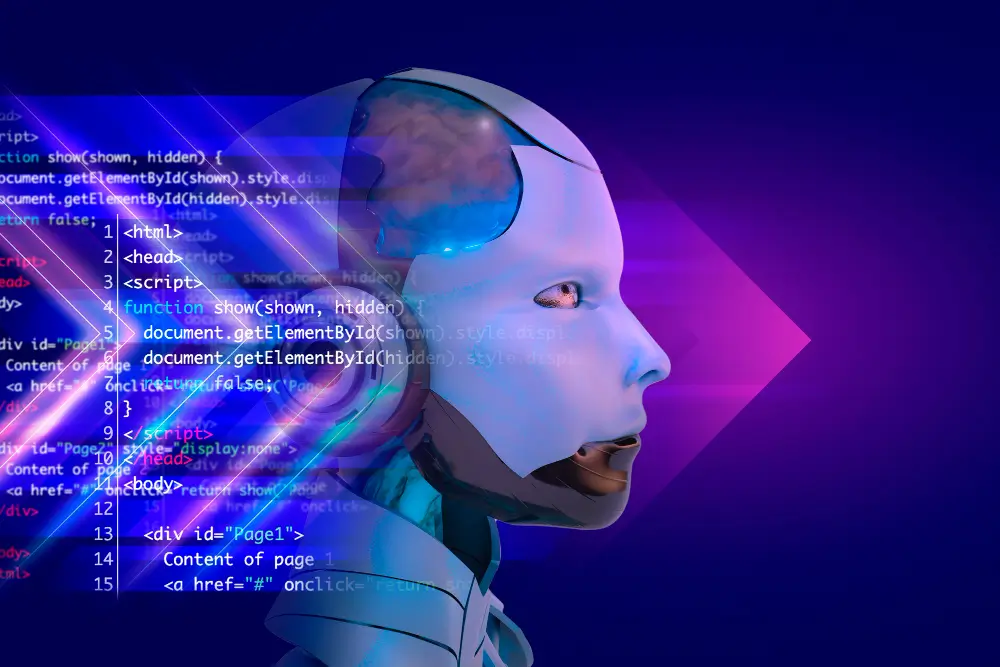The IT (information technology) unit is more than just a support function; it is the cornerstone of a software development company's success. This supportive team ensures stability, fosters innovation, enhances security and optimizes workflows. Moreover, the IT team enables developers to focus on creating exceptional software solutions.
For this reason, IT staff augmentation services have emerged as a game-changing strategy for businesses. By leveraging external talent to fill skill gaps, companies can access specialized expertise, maintain agility, and drive innovation without the long-term commitments of traditional hiring.
This article aims to delve into the fundamentals of IT staff augmentation, explore its differences from conventional hiring, highlight emerging trends, and provide actionable strategies to help organizations maximize their potential in an increasingly competitive landscape.
Let's begin with a brief overview of the fundamental definition of IT staff Augmentation.
Understanding IT Staff Augmentation

What Is IT Staff Augmentation?
IT staff augmentation is a tactical approach to staff management. It consists of sourcing external individuals to fill temporary skill gaps. This allows companies to broaden the reach of their internal team: they can attack new projects without the responsibilities usually required by regular hiring. In other words, it offers flexibility, efficiency, and access to specialized talents or technologies —something especially valuable in the IT field.
Key Differences Between Staff Augmentation and Traditional Hiring
The main differences between staff augmentation and traditional hiring lie in two factors: commitment and flexibility. Traditional hires require a long-term investment, which usually includes recruitment, onboarding, and training. On the other hand, staff augmentation is usually for short-scope projects or spikes in demand for specific skills; it doesn't require the full-time employee overhead. This helps businesses to be agile, scalable, and adaptable to a changing environment.
Managed vs. Staff augmentation services came up when evaluating and comparing another company's hiring model. Businesses should consider whether they need temporary resources integrated into their teams or fully managed solutions for software project delivery. Similarly, understanding Staff Augmentation vs. Consulting is key. While augmentation addresses skill gaps within your team, consulting focuses on strategic problem-solving and guidance. This helps your businesses remain agile, scalable, and adaptable to a changing environment.
Ready to discover what is Agile methodology in software development? Read here and learn all about this flexible approach.
Influential Trends in IT Staff Augmentation for 2025

2025 augurs many changes in the staff augmentation landscape. One of them, for example, is the rise of remote and hybrid work models. Since the pandemic, remote work has shown to be a viable approach for many companies. Combined with staff augmentation, it offers companies access to talents from around the world with specialized skills and diverse perspectives.
More so, as flexibility becomes a major benefit for businesses, there has been a shift to remote talent acquisition. This benefits organizations by giving them access to a greater talent pool. It also engages valuable professionals who may be scarce, expensive, or unavailable on the local market. This trend not only expands recruitment avenues but also fosters diverse teams, a significant drive for innovation.
Of course, AI and automation will probably affect the recruitment process. These latest technologies in the software industry can majorly improve candidate selection technologies. These include everything from matching algorithms —for resumes and job descriptions— to reducing human biases in hiring decisions. Data analytics has also become widespread —organizations use it to get trends about candidate pools, measure the effectiveness of staffing efforts, and make informed decisions that enhance their staffing strategies.
Cybersecurity will also be of crucial importance in 2025. Human staff allocation will continue to involve acquiring people with information security skills and safeguarding the organization's assets and sensitive information. Hiring cybersecurity professionals has become a top priority for organizations trying to mitigate risks, such as cloning attacks.
On the other hand, soft skills and cultural fit are becoming equally important as technical skills. These include things like communication, teamwork, and adaptability. Organizations increasingly want candidates who do not just fit the job description —they want them to blend with the organization's culture. This is especially important when we're talking about virtual interaction, which is more restrictive and poorer in information than face-to-face relations.
In any case, due to rapid technological advancements, specialized skills have become more important in today's IT world. These emerging technologies—machine learning, blockchain, and cloud computing—will be increasingly required in many organizations' teams. That competitive landscape will produce a global talent pool where companies search for talent in various countries and demographics. The result will be diversity, an overall advantage, as it drives innovative solutions and better reflects a company's customer base.
Read this to learn how nearshore staff augmentation is transforming the future of the tech industry! Unlock key insights on benefits, challenges, and trends driving innovation.
Impact of Technological Advancements on Staff Augmentation

Organizations are changing how they manage their workforce. A sensible difference today is the use of cloud-based application solutions. These tools allow real-time collaboration and project tracking while also providing channels of communication best suited for remote augmented teams.
AI programs have also transformed the staff augmentation process. They have been successfully incorporated into candidate screening systems in the last two or three years. With these new tools, recruiters might quickly identify a small pool of suitable candidates; natural language processing and machine learning are the most commonly used mechanisms. This allows much human bias —an unconscious and often unnoticed trend when sifting through a pile of hundreds of resumes— to stand apart.
On a different note, blockchain technology boasts some of the highest potential in defending the integrity and security of remote hiring processes. Organizations would reduce the accompanying risks of fake claims by transparent verification of credentials and employment histories. Finally, VR technologies will be included in the onboarding process. This could ensure that the training takes place much faster, enhancing productivity.
Discover the cutting-edge computer innovations that are transforming the tech industry here.
Challenges and Solutions in IT Staff Augmentation

Like any other field, IT staff augmentation has some widespread challenges. For example, the persistent skills gap in the tech industry is a serious problem. In this regard, organizations can address it proactively through training programs. Continuous professional development among the workforce is always a good policy.
Communication barriers in remote teams are also frequent. They are usually fought with clear definitions and rules, inclusive work environments, and effective project management tools. Quality control and management oversight are also recommended. Performance reviews and frequent feedback ensure the products remain within their usual standards.
Strategies for Successful IT Staff Augmentation
There are strategic recommendations for organizations that want to get the most out of IT staff augmentation:
1. Identify Organizational Needs:
Assess the company's current resources and determine which area there's a lack of talent in.
2. Select the Right Partner:
Reputation matters. Delivery, too. Remember: understanding a business's culture and needs could be the most critical factor in the partnership's success.
If you need more tips on selecting the right software development partner, read here.
3. Effective Onboarding:
They'll need training, mentoring, and useful tools to bring employees up to speed. Being part of a team is a crucial productivity enhancer.
4. Performance Monitoring:
Continuous monitoring and improvement provide insight into new associates' productivity and success in integration.
The Future of IT Staff Augmentation: Predictions and Insights

Evolving Legal and Regulatory Standards
As the workforce becomes more global and remote, so will the laws and regulations governing employment and data security. Businesses must catch up with changes in labor laws in different regions to comply with hiring practices.
The Shift Towards Sustainable and Ethical Practices
Discussions on sustainability and ethical practices are increasingly permeating organizations. Companies are working towards reevaluating their hiring processes; new parameters and preoccupations mean new policies. Businesses intend to align themselves with their corporate social responsibility objectives, such as fair labor practices, and they also want to provide equal opportunities for new hiring and employee development.
Embracing Continuous Learning and Adaptability
Maintaining a dynamic and effective workforce is a challenge. The key to this will be to encourage learning processes for all employees—including augmented staff. The only way to be prepared for disruptive technologies is to be constantly in formation, preparing personnel—and the company— for swings in the market.
What is The Role of The IT Unit at Jalasoft?

At Jalasoft, we prioritize having our dedicated IT unit support our operations rather than relying on IT staff augmentation services. With this in-house expertise, we ensure seamless operations, secure infrastructure, and reliable support for our team of over 1,000 engineers, enabling us to consistently deliver high-quality results to our clients.
Additionally, our in-house expertise enables seamless operations, quicker problem resolution, and a stable environment for software development. By prioritizing an internal IT unit, we eliminate dependencies on external resources, guaranteeing that our clients benefit from uninterrupted service, cutting-edge solutions, and a team fully committed to their success.
Moreover, our commitment to agile nearshoring ensures that cross-functional teams work seamlessly with all our clients, reducing communication bottlenecks and delivering any software project faster while maintaining strict quality standards.
Staff Augmentation Services at Jalasoft
Our staff augmentation firm, with over 20 years of experience, is dedicated to building custom teams with the best Latin American developers trained by us. We shape industry-ready engineers through hands-on training led by experienced professionals. Each Jalasoft engineering team is backed by a multidisciplinary group: project managers, IT support, HR, and more.
As a leading firm in the field, we understand the critical role of skilled professionals in propelling your business forward. For this reason, our approach goes beyond filling gaps. We meticulously match our experts to your unique requirements, ensuring a seamless integration that accelerates your projects and amplifies your success.
IT staff augmentation is not a silver bullet —nothing is. However, it can become a useful tool for organizations wanting to enhance their technical prowess. Providing companies with access to specialized skills on flexible terms through staff augmentation services, such as those offered by Jalasoft. That way, they can augment capacity without losing their agility and widen their skill pool without compromising their structure and quality.
Besides, businesses can tap into diverse tech expertise, from emerging technologies like AI, blockchain, and cloud computing to specialized fields like cybersecurity and data analytics, driving innovation to their company. All these technological advancements have further enhanced the power of staff augmentation.
With the right strategies and partners, IT staff augmentation provides a flexible, scalable, and innovative solution for organizations looking to thrive and achieve the highest challenges.
Key Takeaways for Businesses Looking to Augment Their IT Staff
Augmented staffing inserts needed skills into fast-moving projects without the long lead times of traditional hiring.
Companies can source talent across the globe.
Technological Advancement:
New technologies —like management platforms, artificial intelligence, and automation— make talent sourcing increasingly effective.
Continuous Improvement Mindset:
A sound company culture will have all team members, internal or augmented, held to high standards.











